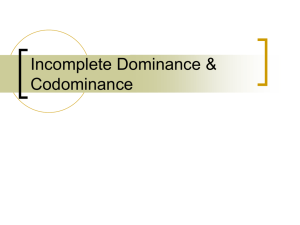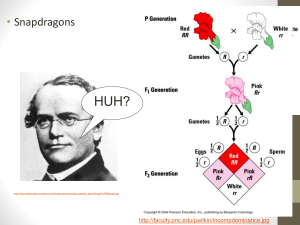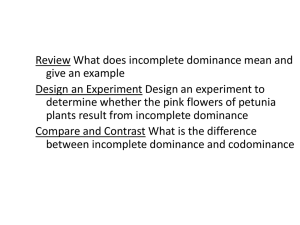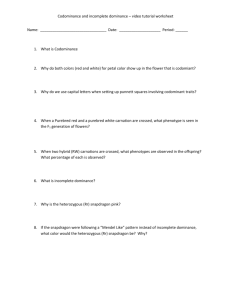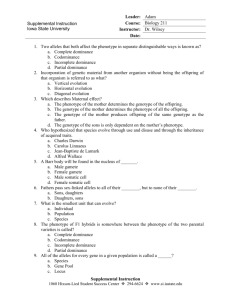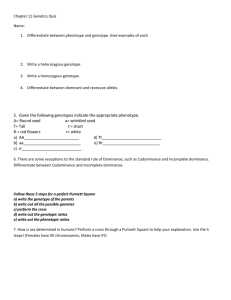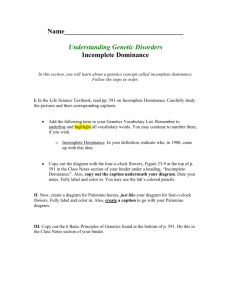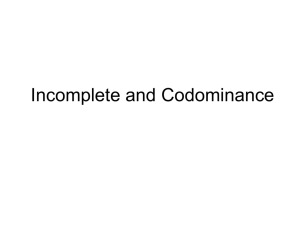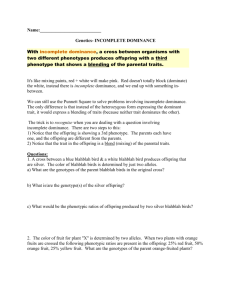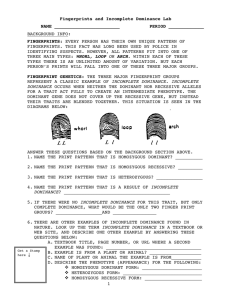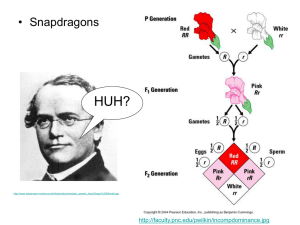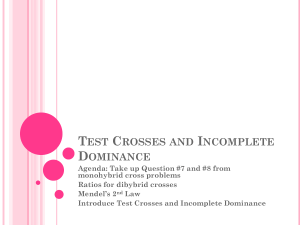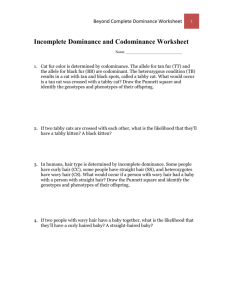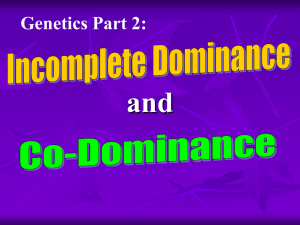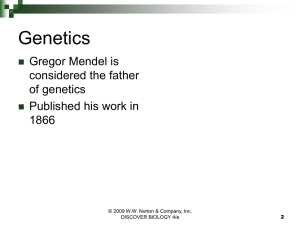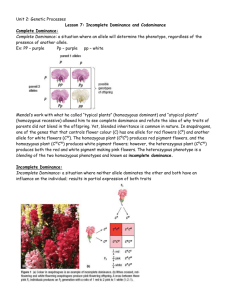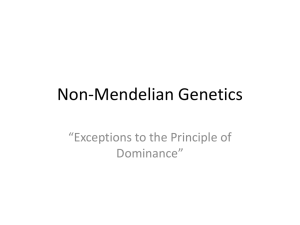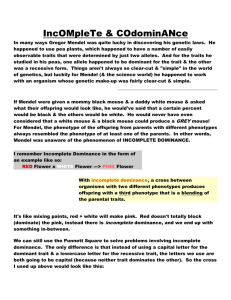Incomplete Dominance & Codominance
advertisement
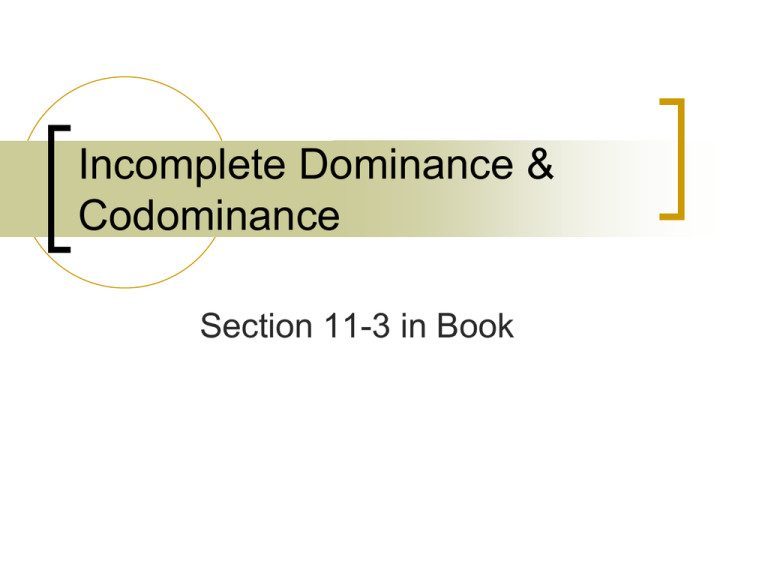
Incomplete Dominance & Codominance Section 11-3 in Book Review of Mendel’s Principles Genes are passed parents offspring; get one allele from each parent During Meiosis, the alleles for a gene segregate from each other. During Meiosis, genes independently assort with each other. Exceptions to Mendel’s principles Sometimes, there is no dominant or recessive gene, or the trait is controlled by many alleles or genes. Incomplete Dominance In Incomplete Dominance, every genotype has its own phenotype. (One allele not completely dominant over the other.) Third phenotype that is a blending of the parental traits. (2 alleles produce 3 phenotypes.) Result: Heterozygous phenotype somewhere in between homozygous phenotype. 1. Incomplete Dominance Examples: Trait: Flower Color Expressions: Red x White Pink RR= Red; RW= pink; WW= white straight hair, wavy, curly Incomplete Dominance Codominance In codominance, neither allele are dominant; both are expressed. A cross between organisms with two different phenotypes produces offspring with has both phenotypes of the parental traits shown. 2. Codominance Both alleles contribute to the phenotype. Example: In come chickens Black Chicken x White Speckled Chicken YOU tell me which type of dominance… Codominance! Type of Dominance? Incomplete Dominance! Type of Dominance? Incomplete Dominance! Test Cross (Back Cross)… Used to determine whether an individual is homozygous dominant or heterozygous. RULES: Always cross unknown genotype with a homozygous recessive. Observe (count) large numbers of offspring to insure accuracy in determining the unknown genotype. Then… if ANY offspring show the recessive trait, the unknown genotype is heterozygous if ALL the offspring have the dominant trait, the unknown genotype is homozygous dominant
